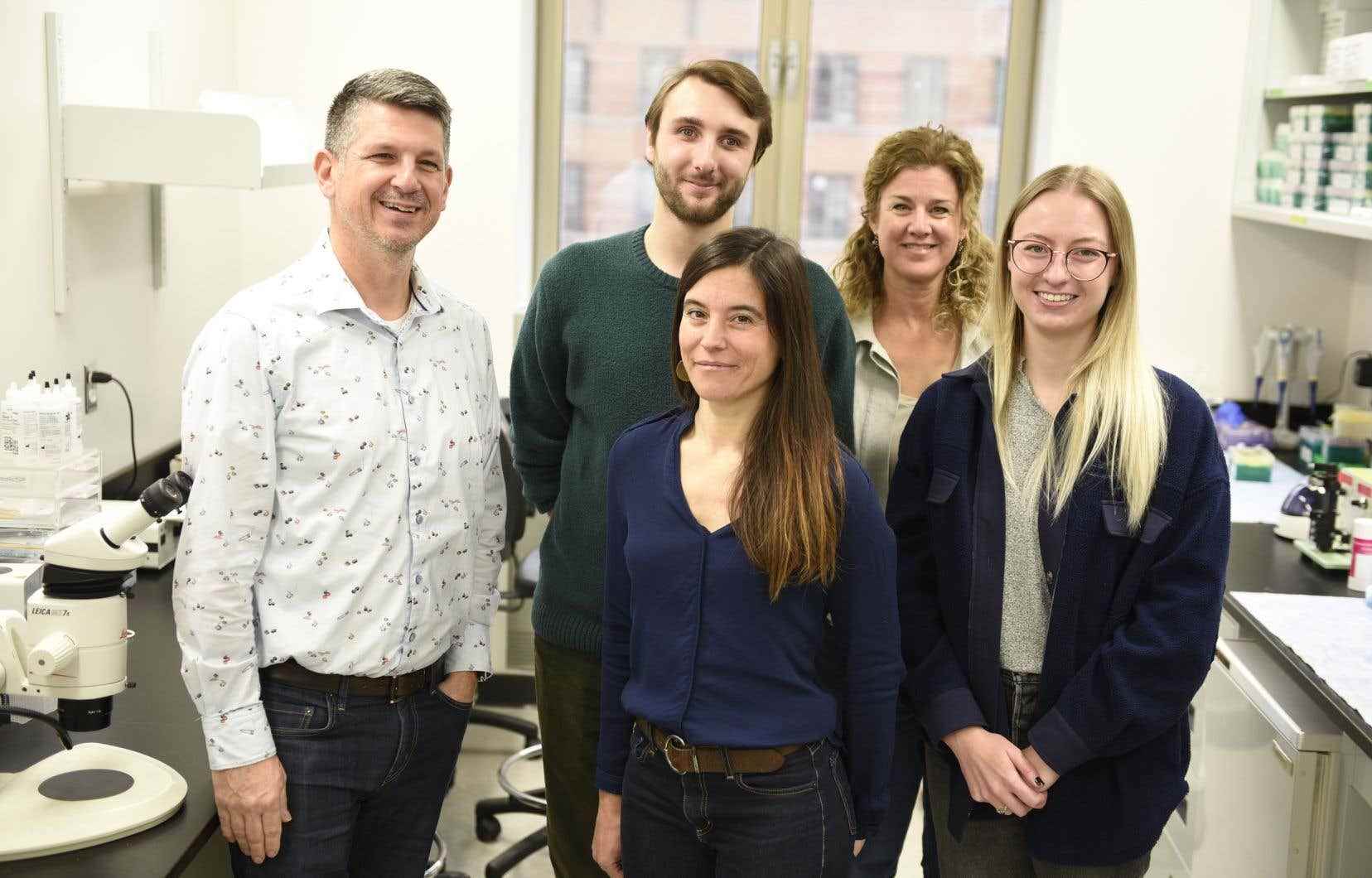This text is part of the special Research section
More than five years ago, researchers from the Montreal Clinical Research Institute (IRCM), the University of Montreal (UdeM) and the Montreal Children’s Hospital plunged into the abyss of disease rare eyepieces. Today, their discovery of a gene mutation opens up new possibilities for the treatment of early-onset retinitis pigmentosa, which causes retinal degeneration and can lead to blindness.
The discovery began several years ago, through a collaboration with a McGill colleague, Robert K. Koenekoop, the director of pediatric ophthalmology at the Montreal Children’s Hospital. In his clinic he had three brothers who were diagnosed very early in childhood with progressive vision loss,” begins the Dr.r Michel Cayouette of the IRCM.
Then, five other families presenting a mutation of this gene, the BCOR, were spotted in the world. After the identification of these people, “we knew that there was a genetic component to this retinal degeneration. It was now necessary to identify why this mutation led to blindness. That’s how the project took off,” explains the man who is also a professor in the Department of Medicine at UdeM.
Collide with the unknown
First, scientists had to understand how the BCOR gene works. “We didn’t know what this gene was doing in the retina. We only knew that he was involved in cancer. So we inactivated it to see the effects. We have seen that the photoreceptors, which are cells, began to malfunction after a certain time, because the expression levels of these genes in these cells were altered,” explains Michel Cayouette.
The researcher compares the role played by this gene in the retina to a thermostat. “The BCOR gene appears to be a regulator. It will ensure that the expression levels of the thousands of genes in the photoreceptors are at the right level. When the functioning of BCOR is affected, it fails”, believes Mr. Cayouette.
In the long term, this dysfunction of the BCOR gene thus leads to retinal degeneration. And when there’s a significant number of cells that die, that’s how blindness happens.
For Michel Cayouette, the work that led to this discovery was a long-term battle. “It’s like giving you a 2000 page book and asking you to find where the mistake is. So, you have to look at all the pages. We knew there was an error, but we didn’t know how it led to a malfunction,” he describes.
Beneficial spin-offs
“Often, in the case of many rare eye diseases, we understand the cause, therefore the mutation, and we identify it. But, it is very rare that we understand how it leads to the disease. In this case, we understood the mechanism”, notes the researcher.
This discovery thus opens the way to several possibilities of intervention, underlines Mr. Cayouette. “We now have all the tools to intervene at each stage of disease progression,” he notes.
Gene therapy, which is like a “molecular scissor”, is one of them, since it can correct the effects of mutations. Moreover, in Canada, a form of this treatment, Luxturna, has been authorized to treat a type of retinitis pigmentosa since 2020.
Thanks to this discovery, people affected by this genetic disease can finally breathe a sigh of relief. “For some, it’s very reassuring to have an accurate diagnosis to know the problem affecting their retina. And the other point is that it allows these people to have genetic screening which will make them eligible for future clinical trials for the development of gene therapy, ”he explains.
A Variable Disease
However, there are still blind spots when it comes to early-onset retinitis pigmentosa disease, notes Dr.r Cayouette. The gene mutation in particular seems to afflict boys more than girls.
“The BCOR mutation plays out on the X chromosome, so it mostly affects boys since they only have one copy. The mother also has this type of chromosome. If the boy inherits his father’s, he could pass the mutation on to his son. But it also depends on the genetic history of the mother,” he says of this disease, which also varies greatly from person to person in terms of symptoms and how it progresses.
This special content was produced by the Special Publications team of the To have to, pertaining to marketing. The drafting of To have to did not take part.
